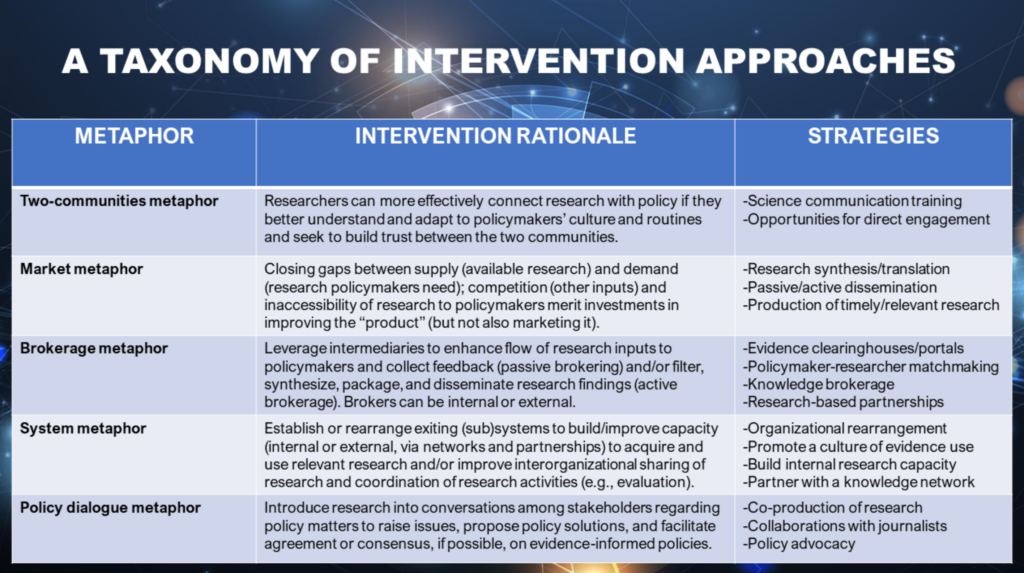Evidence-informed policies have significant potential to improve population health outcomes, but despite efforts to increase the availability and accessibility of timely, credible, and relevant research to policymakers, use of research in health policymaking remains inconsistent and selective. A significant body of theory and research on the use of research evidence (URE) in policy—specifically, regarding when, how, and under what conditions research is used and what it takes to facilitate research use—has been accumulating in different disciplines and fields over recent decades and now informs the development and testing of interventions designed to improve URE at different levels and across policymaking settings. A two-day workshop held in March 2024 brought together a group of URE researchers and practitioners from diverse academic disciplines and policy fields, state and federal officials, and funders of URE and D&I research to collaborate on the development of a framework and tools for classifying URE interventions; comparing underlying theories of action and causal mechanisms; proposing valid and reliable measures/benchmarks of efficacy and effectiveness; identifying key facilitators and barriers; and formulating robust strategies for centering diversity, equity, and inclusion in the production, dissemination, and implementation of policy-relevant research.
Related Resources
The Current Landscape of URE Interventions
There are a number of strategies for facilitating URE in policymaking:
- Strategies focused on building or leveraging relationships with policymakers (directly or via intermediaries) and/or those that seek to establish or strengthen URE capacity in policymaking bodies are most promising but vary in efficacy across policy levels and contexts.
- Interventions strategies designed to integrate URE with underlying policymaking processes and routines tend to be more successful in increasing the likelihood that relevant research is considered by policymakers compared to typical research dissemination approaches.
- The Research-to-Policy (RPC) model is an example of a URE strategy that has been experimentally tested and shown to increase legislators’ URE. This model matches government officials with relevant research expertise via a collaborative process of identifying legislative priorities, developing a rapid response network of experts, organizing events, and disseminating research responsive to legislators’ needs.

A Taxonomy of Intervention Approaches

Remaining Challenges
Meanwhile, there are still challenges for the field to consider:
Assessing Efficacy and Effectiveness: Past and current evaluations of URE interventions commonly track the use of research by policymakers as the primary outcome of the intervention without assessing actual effects on policy. Determining how (direct and mediated causal mechanisms) and when (under which conditions and circumstances, or moderators) a particular URE strategy works to influence actual policy is complicated. More widespread use of logic models to guide evaluations, careful tracking of direct and mediated pathways of effects from research use to underlying policymaking processes, consideration of effects at higher-than-user-level (e.g., culture of evidence use, institutionalization of practices, etc.), and greater attention to potential unintended effects of interventions can produce more robust evidence of efficacy and effectiveness.
Optimization: The common approach to optimization (i.e., optimizing intervention components that proved to be efficacious in repeated trials) may not be adequate or feasible in the policymaking context because successful URE interventions are not transportable across settings and user populations. Adaptivity (flexibility of application) offers a better path to optimization of URE interventions but requires capacity for tracking and assessing implementation.
Equity: Greater consideration must be given to systemic biases and inequities in the research available to inform policy and how such inequities may be proactively addressed as an integral component of URE interventions (e.g., representation of communities).






